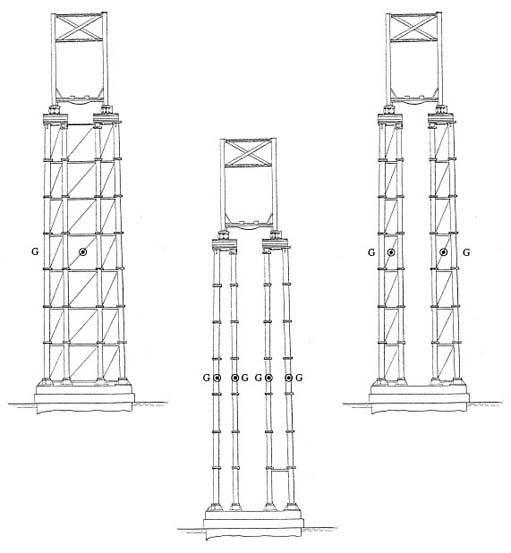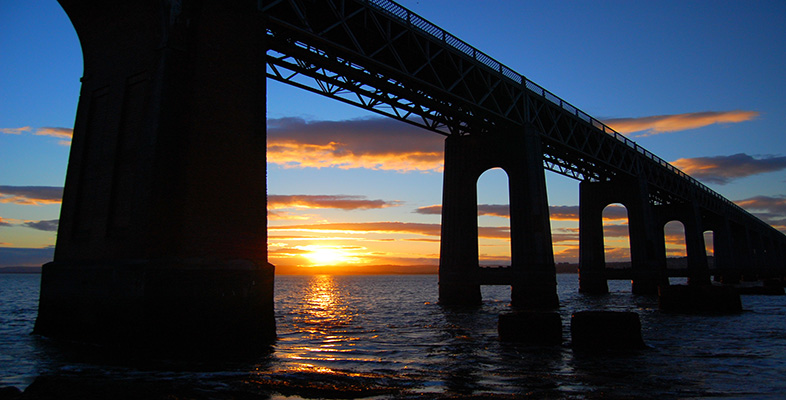5.10 Bridge stability
Any fracture of the diagonal wind brace tie bars could allow substantial lateral movement at the top of the piers. If these tie bars had already been injured by the previous train to cross the bridge, it would have only taken a little extra effort to complete the process as the mail train arrived over each pier supporting the high girders. Once the wind braces had failed completely, and the struts fractured at their connections each pier would behave as two separate supporting structures.
The centre of gravity of the combined pier would need to move 6 feet 11 inches before becoming unstable, but if the wind braces were gone, each set of three tired columns would now only need to move 3 feet before toppling became possible (Figure 47). The argument can be taken to the extreme situation of just one column if the stabilising tie bars in each set of three tiered columns fractured. Then the lateral movement would drop to just 7.5 inches for a 15-inch column or 9 inches for the outer 18-inch columns. With the train over a pier, the centre of gravity would rise substantially, so lessening the amount of lateral movement needed for toppling.

Such a picture of progressive fracture of the diagonal tie bars suggests failure of the wind braces in pier 4 may have destabilised it to such an extent it started to topple as the train arrived over it. Toppling would have taken some time to occur, by which time the train would have travelled considerably further.
As the train approached pier 5, the same effect would have destabilised it too, by which time a large length of high girder will have started to tip over. It follows that all the other piers of the high girders section were in a severely damaged state, because the wrench of the high girder dropping from piers 4 and 5 toppled them too in a chain reaction, which destroyed the entire high girders part of the bridge.
The suggestion the wind braces failed and each set of three tiered columns fell separately is corroborated by evidence given by John Cochrane, a civil engineer who had worked in London on the Crystal Palace in 1851; and on the Westminster, Charing Cross and Cannon Street bridges. Called by NBR, he gave key evidence about the way the columns fell, and in particular, the position of one set of columns on the river bed:
15,001. (Mr Trayner) Did you notice that on some of the piers the lower tier of columns had been forced to the westward? – I did.
15,002. The great mass of the superstructure we know went over to the east? – Yes
15,003. In your opinion what led to the forcing of these columns westward? – At no. 5 pier the eastern set of columns is underneath the eastern girder crushed up.
15,004. The eastern set of columns is under the eastern girder? – Yes, as it lies on its side, or as it did lie on its side at the bottom. The western columns are lying over the top of the western girder, and that renders it absolutely clear to my mind that the three eastern columns gave way first, that the structure went over sufficiently quickly, and that then the three outer columns or western columns fell over on to the top of the girder, and so they are found.
…
15,007. (Mr Barlow) Showing that the eastern and western parts separated from each other? – That they separated from each other. I think the probability is that the separation would not have taken place had the angle girders or L-girders at the top been connected together so as to have brought the whole six columns in unison.
…
15,015. (Mr Barlow) If those columns had been strongly cross-braced, strongly fitted, and strongly held down by holding-down bolts, do you think the bridge would have been sufficient? – I believe that it would be standing at the present moment; it is a question of the strength of the bracing of course.
